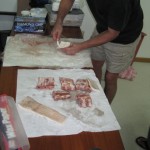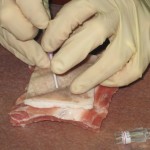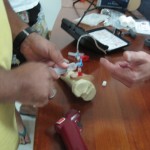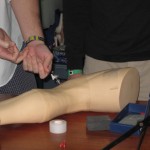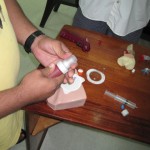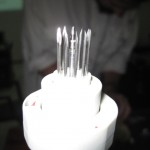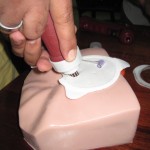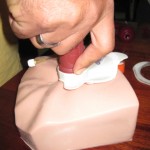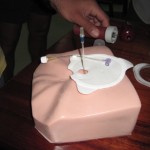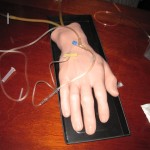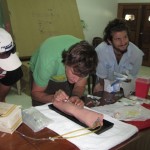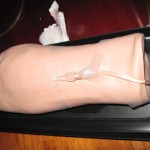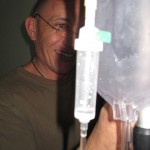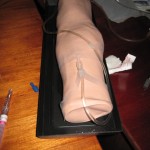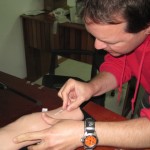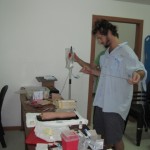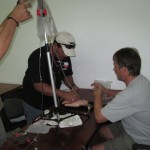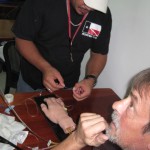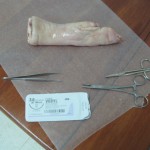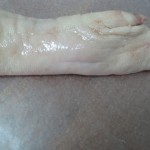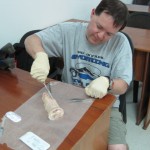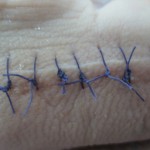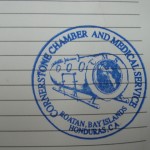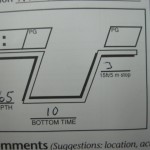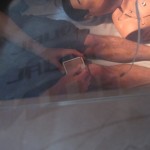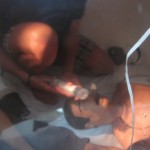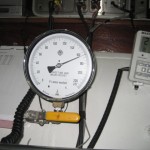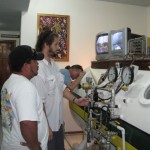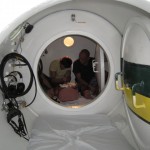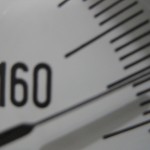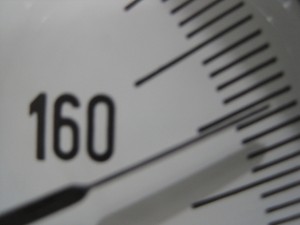
Lots of interesting things happen as you descend in a chamber. You can’t whistle at 60 feet. It gets warm as you’re pressed down. It’s awfully loud as the air flows in, and after about 100feet, you starting acting funny. Nitrogen narcosis, rapture of the deep, Martini’s law. For me, I have to really focus on one thing at a time. If I am trying to do something and someone starts talking, it’s hard to focus. To complicate matters, your voice changes. Everybody sounds like a chipmunk or Donald Duck. I was excited to make the trip to 165 feet, which didn’t help matters. By the time we arrived at 165 for our ten minutes of bottom time, I was giggling and I still had to perform some skills. First, was drawing some saline to fill the cuffs on a combitube. 100mL through a 25 gauge needle is hard; when you’re narced, it’s harder. Still, I got the saline drawn, pushed the airway and filled the cuffs. Next up: drawing meds. That was easier, only 1.5cc for an IM injection. Brooks and Frank were trying to take vitals on each other during the dive and were just being goofy. As we started the ascent, Ron had me try to push an ET tube. The chamber isn’t big to start with. Trying to get a good position, using a laryngscope to visualize the trachea was damn near impossible. The combitube or a King tube would be a lot better.
All in all, though, it was an interesting experience and I learned that I need to focus on one thing at a time if I’m working at that depth.
